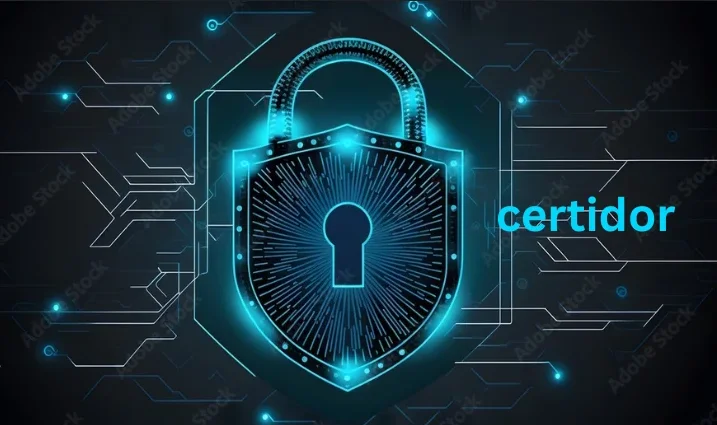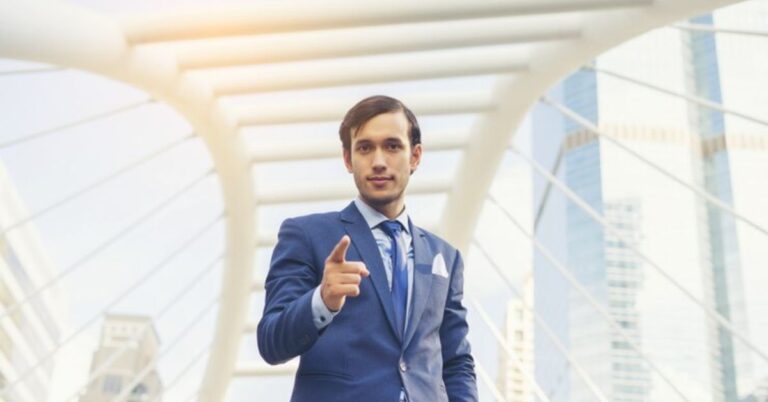How and Why Beer Gets Its Bubbles: A Deep Dive into Carbonation
There’s something truly captivating about a freshly poured becomes bubbly as beer with its golden or amber hues glistening as bubbles rise to the surface. This effervescence is more than just a visual treat—it plays a crucial role in the flavor, texture, and overall enjoyment of the beer.
To understand why beer becomes so bubbly when poured, we need to explore the science of carbonation. This involves looking into the role of CO2 and how various factors influence the formation and persistence of those delightful bubbles. Whether you’re a casual beer drinker or a homebrewing enthusiast, understanding the science behind beer’s fizz can deepen your appreciation for this timeless beverage.
Understanding Carbonation in Beer
The signature becomes bubbly as beer you see in a freshly poured beer come from a process called carbonation. This happens when carbon dioxide (CO2) is dissolved in the beer. When the beer is poured or opened, the CO2 escapes, forming those familiar bubbles.
Carbonation can occur naturally or be added artificially. Natural carbonation happens during fermentation when yeast breaks down sugars, producing both alcohol and CO2. This CO2 gets trapped in the beer, creating pressure that keeps the gas dissolved. When the pressure is released—such as when you open a bottle—the CO2 escapes, creating the bubbles.
In commercial brewing, artificial carbonation is commonly used. This involves directly injecting CO2 into the beer to ensure a consistent level of fizz in every batch. Whether natural or artificial, carbonation is key to the beer’s texture and refreshing quality.
Why Beer Becomes Bubbly as Beer: The Role of CO2
Carbon dioxide is the main factor behind the bubbly nature of beer. During fermentation, yeast consumes sugars and produces CO2. In a sealed container like a fermentation tank or bottle, this CO2 gets trapped and dissolves into the beer. When you open or pour the beer, the pressure drops and the CO2 escapes, creating those familiar bubbles.
How quickly the CO2 escapes and the size of the bubbles depend on several factors, such as the beer’s temperature, its becomes bubbly as beer , and the type of glassware used. For instance, warmer beer releases CO2 more quickly, resulting in larger bubbles and a faster loss of fizz. In contrast, colder beer retains its CO2 longer, producing smaller, more persistent bubbles.
The Influence of Foaming on Beer’s Bubbly Appeal
Foam is a crucial part of beer’s visual and sensory experience. When you pour a beer, CO2 bubbles rise to the surface, creating a frothy head. This foam does more than just look good; it helps preserve the beer’s aroma and flavor.
The formation of foam is influenced by the proteins and other compounds in the becomes bubbly as beer . For example, wheat beers often have a thicker head because they contain more proteins that stabilize the foam. The type of glass you use also plays a role—certain shapes and residues can either enhance or reduce foam retention.
A well-poured beer with a rich, creamy head is a sign of quality and improves the overall drinking experience. The foam captures the volatile compounds that contribute to the beer’s aroma, making each sip more aromatic and flavorful.
What Causes Beer to Become Bubbly?
Several factors influence how bubbly a beer becomes, each playing a unique role:
- Fermentation Process: The type of yeast and the fermentation method used impact carbonation levels. For instance, ale yeast generally produces less CO2 compared to lager yeast.
- Beer Style: Different styles of beer have different carbonation levels. Belgian ales, for example, are known for their high carbonation, while stouts tend to have a smoother, creamier texture with less fizz.
- Serving Temperature: Serving beer at the right temperature helps control CO2 release, resulting in a finer, more persistent fizz.
- Glassware: The shape and cleanliness of the glass affect bubble formation. A glass with a rough surface or leftover residue can cause excessive foaming, while a clean, smooth glass helps maintain steady bubbles.
- Pouring Technique: How you pour the beer can also impact its effervescence. Pouring at an angle and with a gentle flow helps achieve a good balance between foam and liquid, preserving the beer’s bubbly character.
The Impact of Carbonation on Beer Flavor
Carbonation plays a crucial role in shaping the taste of beer. The bubbles in beer provide a fizzy sensation that enhances its crispness and refreshing qualities. Additionally, as CO2 is released while drinking, it helps carry the becomes bubbly as beer aromas to your nose, intensifying its overall fragrance.
Different levels of carbonation can also influence how the beer’s bitterness, sweetness, and acidity come across. Beers with higher carbonation often feel lighter and more effervescent, which can highlight the bitterness from hops or the tartness of certain styles. On the other hand, becomes bubbly as beer with lower carbonation, like traditional English ales, offer a smoother, richer mouthfeel that complements their maltier flavors.
Why Some Beers Are More Bubbly Than Others
Not all beers have the same level of carbonation. Some styles are crafted to be more effervescent, while others are designed to have minimal bubbles. For example, Belgian-style beers are known for their lively carbonation, which boosts the complex flavors and aromas that define these brews.
In contrast, traditional cask ales are served with very low carbonation. These becomes bubbly as beer are meant to be smooth and creamy, with carbonation playing a subtle, background role rather than dominating the flavor.
Brewers carefully control the level of carbonation during the brewing and packaging processes to match the style of the beer and enhance the overall drinking experience. This meticulous control ensures that each beer presents the intended flavor, aroma, and mouthfeel to the drinker.
How Temperature Affects Beer’s Bubbly Nature
Temperature plays a key role in how bubbly a beer becomes. Cold temperatures help keep CO2 dissolved in the beer, leading to a more controlled release of bubbles when you pour it. That’s why beer served too warm can become overly foamy and lose its carbonation quickly.
On the other hand, beer that’s too cold might not release enough bubbles, making it feel flat and lacking in character. The ideal serving temperature varies by beer style—lagers are usually served colder than ales. Serving becomes bubbly as beer at the right temperature ensures that the bubbles enhance the overall drinking experience.
The Role of Glassware in Enhancing Beer’s Bubbles
The type of glass you use for serving beer can have a big impact on how bubbly it appears and tastes. Glassware designed for specific beer styles can either enhance or reduce the effects of carbonation. For instance, fluted glasses are often used for highly carbonated beers like pilsners becomes bubbly as beer they help maintain the head and highlight the bubbles.
On the other hand, pint glasses with a wider mouth are better suited for ales with moderate carbonation. They allow the beer to breathe and release its aromas more effectively. Additionally, using a clean glass is essential for proper bubble formation, as any residue can interfere with the carbonation.
Pouring Techniques That Maximize Beer’s Bubbles
How you pour your becomes bubbly as beer can significantly impact its carbonation and foam. Pouring the beer down the side of the glass at a 45-degree angle helps minimize excessive foaming while allowing some CO2 to escape. When the glass is about half full, straighten it and pour down the center to create a perfect head.
This technique ensures that the beer retains the right amount of carbonation and forms a thick, creamy head that enhances both the aroma and appearance. Pouring too forcefully can result in too much foam, while pouring too gently can lead to a flat, lifeless becomes bubbly as beer .
Understanding Bottle-Conditioned Beers and Their Bubbles
Bottle-conditioned beers go through a secondary fermentation right inside the bottle, which naturally carbonates the beer. This traditional method is common in styles like Belgian ales and some craft beers.
In this process, a small amount of sugar and yeast is added to the beer before sealing the bottle. As the yeast consumes the sugar, it produces CO2, which carbonates the beer on its own.
The Impact of Aging on Beer’s Carbonation
Aging beer can impact its carbonation levels. As time passes, CO2 may escape, resulting in a flatter beer. This is especially true for beers that aren’t stored in airtight conditions or those that are aged for a long time.
However, some becomes bubbly as beer such as lambics or sour ales, are deliberately aged and may develop unique carbonation traits over time.
Why Some Beers Go Flat Faster Than Others
Several factors can cause becomes bubbly as beer to go flat quickly, including improper storage, exposure to air, or serving at the wrong temperature. Beers that are not sealed properly or stored in warm conditions may lose their carbonation more rapidly.
Additionally, beers with lower initial carbonation levels or those served in wide-mouthed glasses may go flat faster.
The Effect of Carbonation on Beer Mouthfeel
Carbonation has a major impact on a beer’s mouthfeel, which is the physical sensation you experience while drinking. becomes bubbly as beer with high carbonation often feel lighter and more effervescent, with a crisp, refreshing finish. The bubbles create a pleasant tingling sensation on the palate, enhancing the beer’s overall crispness.
In contrast, beers with lower carbonation levels generally offer a smoother, creamier mouthfeel. This is especially valued in styles like stouts and porters, where the emphasis is on the rich malt flavors. The right balance of carbonation is essential for how a beer feels in the mouth and plays a big role in its overall enjoyment.
How Brewing Techniques Influence Beer’s Bubbles
Brewing techniques can significantly affect the carbonation levels and quality of beer. For instance, open fermentation, where beer ferments in open vessels, allows some CO2 to escape, resulting in a becomes bubbly as beer with softer carbonation.
On the other hand, closed fermentation keeps all the CO2 produced by the yeast trapped, leading to higher carbonation levels. The final carbonation of a beer is influenced by the choice of fermentation method, the yeast strain used, and the conditioning process.
Exploring Nitrogenated Beers and Their Unique Bubbles
Nitrogenated beers, like stouts and some ales, use nitrogen gas instead of CO2 for carbonation. Nitrogen creates smaller, more stable bubbles, giving the beer a smooth and creamy texture. This results in a mouthfeel that’s softer and more velvety compared to the sharper fizz of CO2-carbonated beers.
These beers are usually served on draft systems specifically designed for nitrogen, which helps produce a thick, long-lasting head and a rich, creamy body. This contrasts with the lively effervescence found in becomes bubbly as beer carbonated with CO2.
How Bottle Shape Affects Beer’s Bubbly Nature
The shape of a beer bottle can affect its carbonation and bubble formation. Bottles with a narrow neck are better at retaining CO2, helping the beer stay fizzy for a longer period. The smaller opening limits the surface area exposed to air, which slows down the loss of CO2 when the bottle is opened.
On the other hand, wider bottles or cans might let CO2 escape more quickly, leading to a beer that loses its fizz faster. So, the design of the packaging plays an important role in maintaining the beer’s bubbly character and freshness.
Why Beer Becomes Bubbly When Poured
When you pour beer, the CO2 that’s dissolved in the liquid comes out as bubbles. This happens because the act of pouring agitates the beer and reduces the pressure, causing the bubbles to rise and form a foam head. This foam isn’t just for show; it plays a crucial role in the beer’s presentation and experience.
Pouring also helps release the aroma compounds in the beer. That’s why the first few moments after pouring are key for fully appreciating the beer’s bouquet. Using the right pouring technique is important for getting the best bubbly effect and creating a perfect head of foam.
How Altitude Affects Beer’s Carbonation
Altitude can impact how bubbly a beer is. At higher elevations, the lower atmospheric pressure allows CO2 to escape from the beer more easily. This can result in a beer that tastes flatter or, conversely, becomes over-carbonated when opened at high altitudes.
To address this, becomes bubbly as beer often adjust the carbonation levels for beers that will be consumed at higher elevations. Knowing how altitude affects carbonation can help beer enthusiasts enjoy their favorite brews, no matter where they are.
The Historical Significance of Carbonation in Beer
Carbonation has been central to the history of beer. Early brewers noticed that sealing beer in containers during fermentation created a fizzy, refreshing drink. This insight sparked the development of various fermentation and conditioning techniques to boost carbonation.
From naturally carbonated ales to highly bubbly becomes bubbly as beer , carbonation continues to be a vital element in making beer enjoyable.
Why Beer is Bubblier in Freshly Opened Bottles
A freshly opened bottle of beer tends to be more bubbly because the CO2 inside has been under pressure and is dissolved in the liquid. When you open the bottle, the pressure drops, causing the CO2 to quickly escape and form bubbles.
As the beer is exposed to air and CO2 continues to escape, it becomes less bubbly. That’s why it’s best to drink beer soon after opening to enjoy its full carbonation and freshness.
The Future of Carbonation in Beer
As brewing technology advances, the ways we control and enhance carbonation in beer are becoming increasingly sophisticated. New packaging innovations, like advanced bottle designs and CO2-retaining caps, could help keep carbonation fresh for longer.
With the rise of craft brewing, we’re also seeing more experimentation with carbonation levels, which could lead to new and exciting becomes bubbly as beer styles. The future of carbonation promises even more diverse and enjoyable drinking experiences for beer enthusiasts everywhere.
Summary
Carbonation plays a vital role in the enjoyment and quality of beer. It’s responsible for the bubbles and fizz that contribute to a beer’s mouthfeel and overall experience. Carbonation occurs when CO2, dissolved in the beer, is released as bubbles when the bottle or can is opened. This process can be influenced by several factors including the brewing method, the type of beer, serving temperature, and even the shape of the glass.
Key
- Brewing Methods: Beers can be carbonated naturally through fermentation or artificially by adding CO2.
- Temperature: Cold temperatures help retain CO2, while warmer temperatures can cause it to escape more quickly.
- Glassware: The shape and cleanliness of the glass affect bubble formation and foam quality.
- Pouring Technique: Proper pouring techniques can enhance or diminish the beer’s bubbly nature.
- Packaging: The design of the bottle or can impacts how well carbonation is preserved.
Facts
- Natural vs. Artificial Carbonation: Natural carbonation happens during fermentation, while artificial carbonation is achieved by directly adding CO2.
- Temperature Effects: Beer served too warm may lose carbonation quickly, whereas very cold beer might not release enough bubbles, making it seem flat.
- Glassware Influence: Narrow-necked bottles and fluted glasses help maintain carbonation better than wide-mouthed bottles or glasses.
- Nitrogenation: Some beers use nitrogen instead of CO2 to create smaller, stable bubbles that give a smooth, creamy texture.
- Aging Impact: Over time, CO2 can dissipate from beer, making it flatter if not stored properly.
FAQ
Q: Why does beer become bubbly when opened?
A: Beer becomes bubbly when opened because the CO2 dissolved in the liquid is released due to a drop in pressure. This causes the CO2 to form bubbles.
Q: How does temperature affect the carbonation of beer?
A: Cold temperatures help keep CO2 dissolved in the beer, resulting in a more controlled release of bubbles. Warmer temperatures can cause CO2 to escape more rapidly, leading to a quicker loss of carbonation.
Q: What role does glassware play in a beer’s carbonation?
A: The shape and cleanliness of the glass can impact bubble formation. Narrow glasses or those designed for specific beer styles help retain carbonation better, while dirty or wide glasses can lead to excessive foaming or quicker loss of bubbles.
Q: How does pouring technique affect beer’s bubbles?
A: Pouring beer at a 45-degree angle helps reduce excessive foaming and allows some CO2 to escape. Straightening the glass as you pour helps create a perfect head while retaining the right amount of carbonation.
Q: What is bottle conditioning?
A: Bottle conditioning is a process where a small amount of sugar and yeast is added to beer before sealing. This secondary fermentation naturally carbonates the beer by producing CO2 in the bottle.
Keep an eye for more news & updates on Don Guides!






